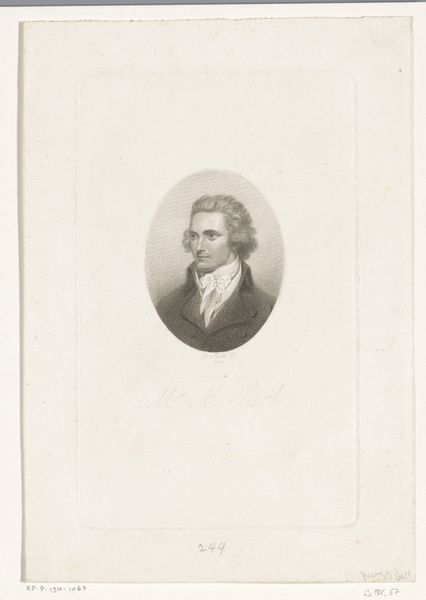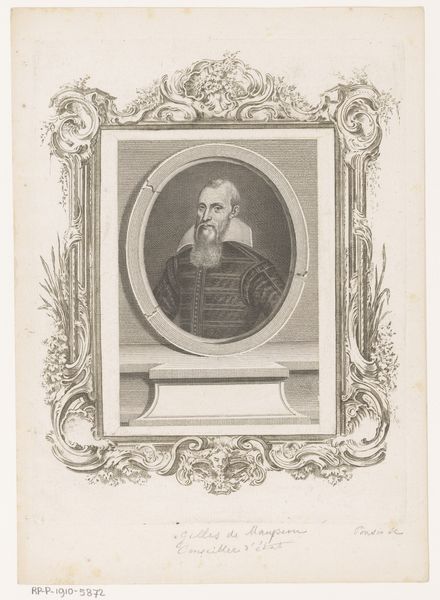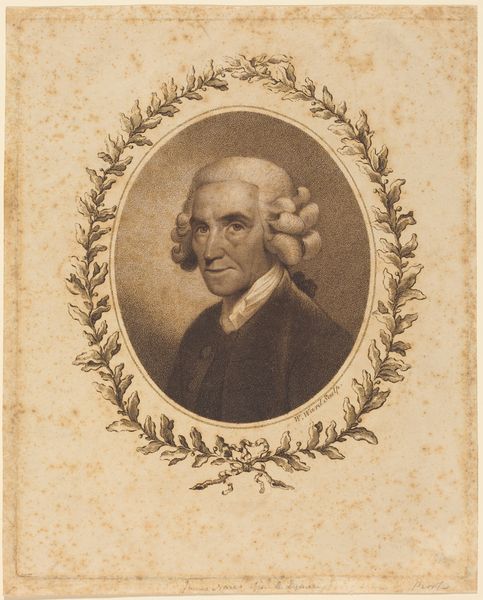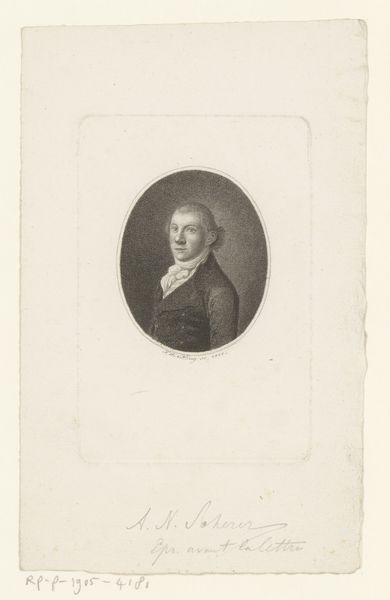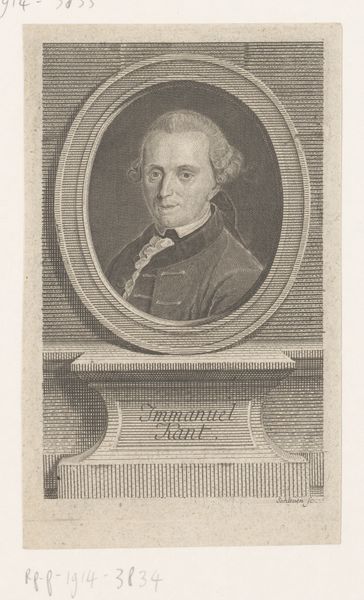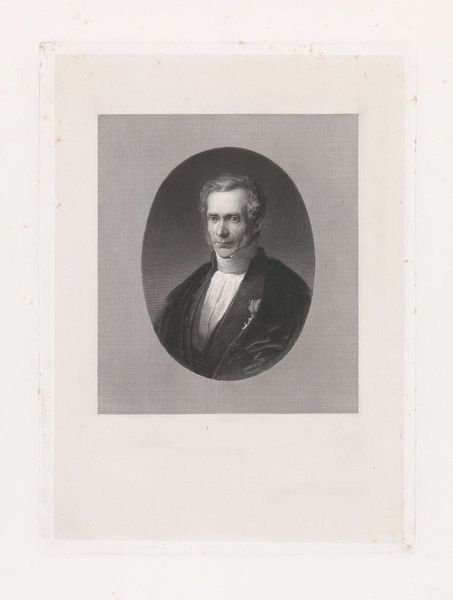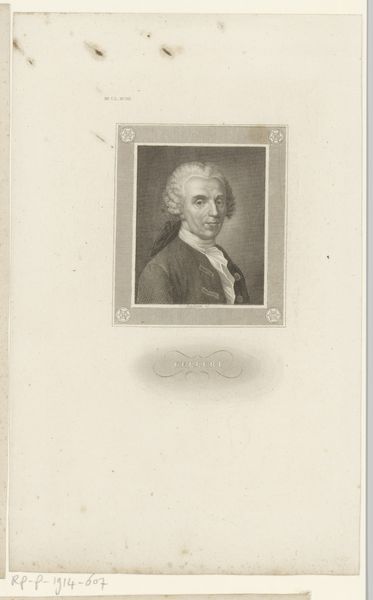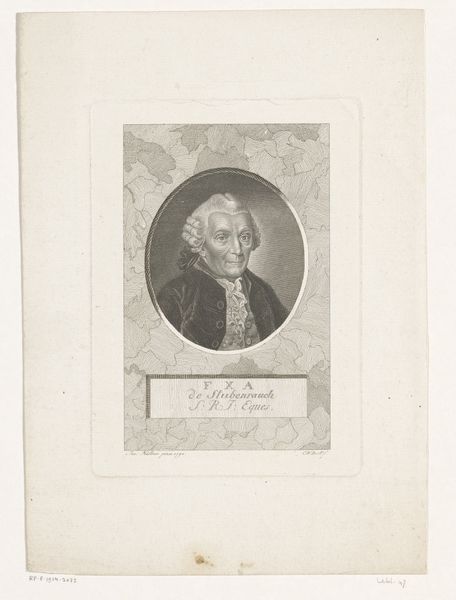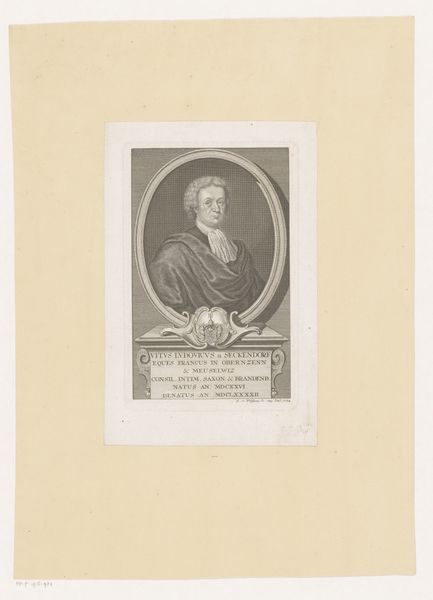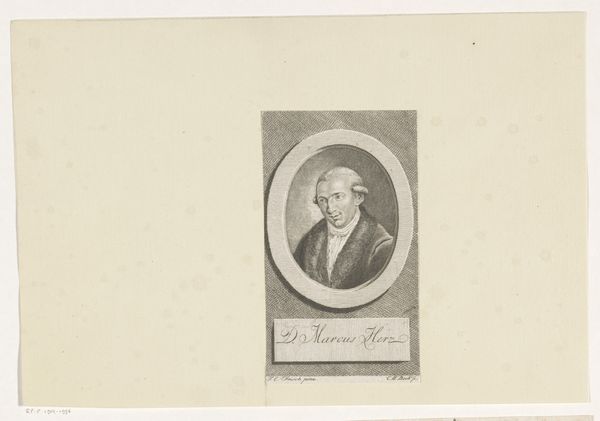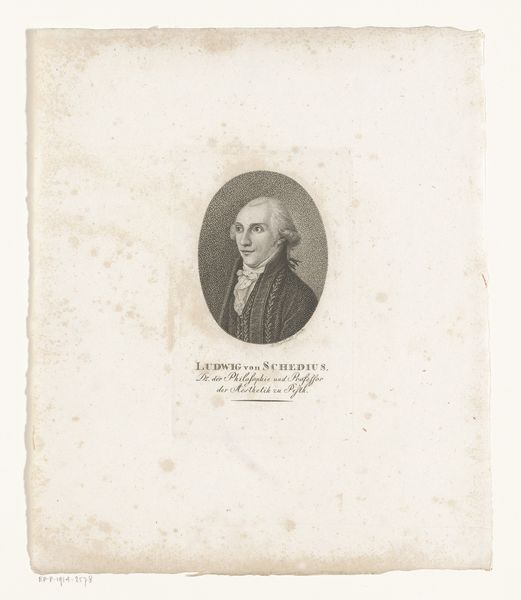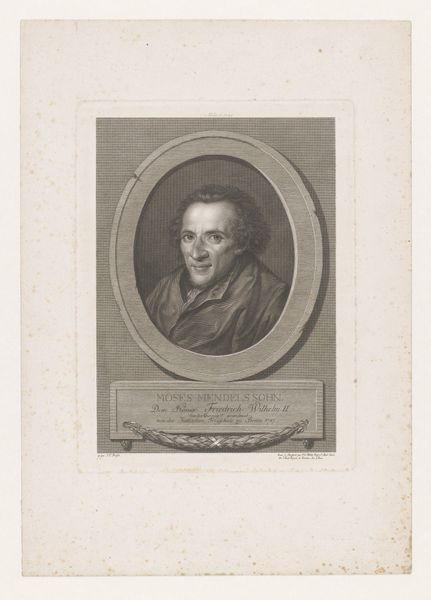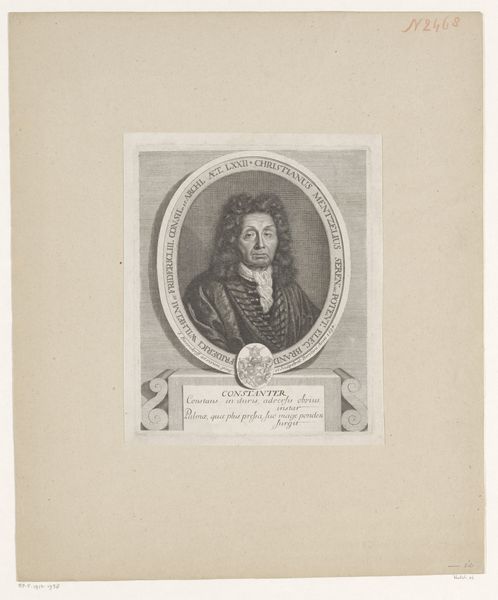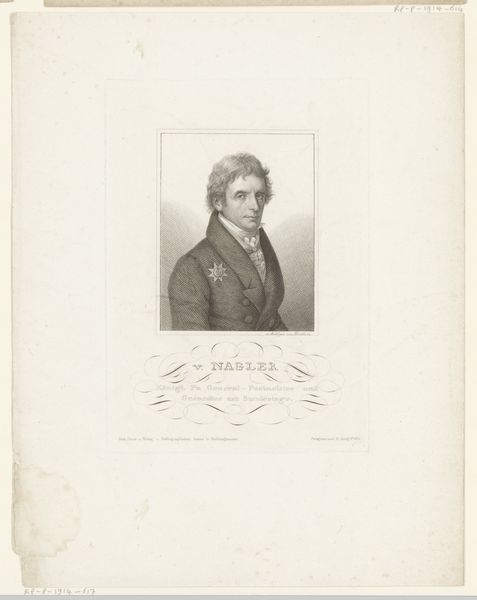
drawing, print, paper, engraving
#
portrait
#
pencil drawn
#
drawing
#
neoclacissism
# print
#
paper
#
pencil drawing
#
romanticism
#
engraving
Dimensions: height 292 mm, width 215 mm
Copyright: Rijks Museum: Open Domain
Editor: This is Nicolas Pinet’s "Self-Portrait," created around 1816. It's an engraving, which gives it this really intricate, almost photographic quality despite being from the early 19th century. There's something serene yet self-conscious about the portrait. What social narratives do you see at play in this work? Curator: The framing, literally and figuratively, is crucial. We see Pinet enclosed within a wreath of flowers. Think about the context: 1816 is smack-dab in the post-revolutionary period. Flowers were heavily coded symbols, often alluding to republican ideals. So, how might this self-portrait, using the symbolic language of the era, engage with ideas of individual identity and social change? What do you make of the musical instruments below? Editor: They appear to represent artistry, perhaps hinting at the pursuit of passions. The artist appears to almost sanctify them. Curator: Exactly! The surrounding text also plays a role: "Their talents keep sadness away..." Art is being positioned here as a balm, a virtue, maybe even a means to transcend earthly troubles in post-revolution France. There are subtle clues embedded throughout this portrait: his elevated position among earthly symbols and intellectual prowess with music and literacy. How do you think this contributed to an audience that was perhaps skeptical of the monarchy? Editor: It's like Pinet is aligning himself with a kind of cultural leadership, perhaps suggesting that artists and intellectuals hold the real power and influence after a revolution, and art itself is presented as power! That’s fascinating. Curator: Yes, this really brings a unique, subversive twist to the traditional portrait, using symbols to comment on societal shifts and new ideologies of revolutionary and post-revolutionary France. Editor: I never would have considered the republican symbolism of the flowers! Thanks, that completely changed how I understand this piece.
Comments
No comments
Be the first to comment and join the conversation on the ultimate creative platform.
